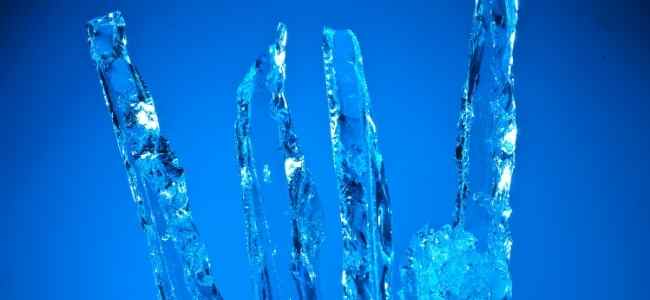
Ice makers succeeded the trusty old ice tray as the choice method of making ice at home some time ago. What’s surprising is that ice makers work almost the same as ice trays – the only difference being reduced human effort in the former. With an ice maker, the process of filling the water tray and ice cube extraction is automated.
Of course, as it is with most things that are automated, an ice maker utilizes electricity to power its motor, heating unit, and water valve. Once you’ve connected your ice maker to your refrigerator’s electrical circuit and plumbing line, your work is done.
But, being a convenient assembly line for ice cubes doesn’t make the ice maker invulnerable – as is made clear by the problem of ice sticking in the portable ice maker.
Why does Ice Stick In The Ice Maker?
Almost every refrigerator owner is familiar with the phenomenon of ice getting stuck to the maker. Generally, this problem doesn’t signify a major breakdown, so you probably don’t have to worry about this problem too much. Here are some possible reasons why your ice maker may be having trouble getting the ice to remain isolated:
1. Irregular use
One of the most likely reasons the ice keeps getting stuck to your ice maker is sporadic use of the ice bin. When your use of the ice maker lessens during winters, for example, ice can melt when the temperature inside the freezer drops, and this can cause condensation.
Condensation can form a layer of water on the ice, and when the temperature gets back to normal, that layer of water freezes and causes the ice cubes to stick to each other and the surface of the ice maker.
2. The temperature of your freezer isn’t accurate
Water freezes at 32 degrees Fahrenheit. Therefore, if there’s an irregular drop in the temperature of your freezer, you can expect condensation and ensuing clumps of ice.
A power outage can cause the ice in your freezer to melt, and when the power comes back on, the temperature reverts and the ice starts freezing again. Another reason that can affect your freezer’s cooling ability is leaving the freezer door open for too long. This can happen quite easily, without you even noticing, when you’re setting up the freezer, or if you accidentally leave the door open after using the icebox.
3. Excess moisture
Have you ever paid close attention to the elastic strip at the doors of your refrigerator and thought of its purpose? The strip lining the door of your freezer from the inside works as a seal. It helps the outside elements from interfering with the cooling of your freezer.
Although, sometimes when the elastic lining gets damaged, the freezer’s ability to cool can be compromised. It can also allow moisture from the outside to leak in and cause ice crystals to stick together.
How To Keep Ice From Sticking To The Ice Maker
Defrost cycles and condensation are a part of making ice via an ice maker. But, that doesn’t mean you can’t try and find solutions to the problem of clumping ice. Here’s what you can try instead:
● Lower the temperature of the thermostat
Your fridge utilizes a defrost cycle to keep its heat exchanger in working order. However, a fault in your thermostat can cause the defrost cycle to recur before it’s needed. Make sure your thermostat is in working order by lowering the thermostat. If the freezer’s defrost cycle goes back to normal, your clumpy ice problems will be over.
● Utilize paper bags
One sure-fire of getting rid of excess moisture in and around your ice maker is to wrap the ice bucket with paper from paper bags. This will help in absorbing the condensation and stop your ice from sticking to the maker.
● Invest in a portable ice maker
A portable ice maker does exactly what its name suggests, with the added advantage of mobility. You can buy a portable ice maker to supplement the ice maker in your freezer. Additionally, the device is perfect for health-conscious individuals who don’t drink cold water regularly and don’t want to waste money and electricity on an ice maker that’s used seldom.











